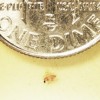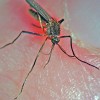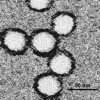
Zika is a mosquito-transmitted virus that has recently spread to the Americas. Zika virus (ZIKV) was discovered in 1946 in Africa where it was isolated from a Rhesus monkey in the Zika forest of Uganda. In 2007, a disease outbreak occurred on the Yap islands in Micronesia, and in 2013, an outbreak occurred in French Polynesia. In 2015, a large outbreak occurred in Brazil, and ZIKV has since spread through the Americas. As of April 18, 2016, 15 counties in the state of Florida had reported travel-associated Zika cases. This seven-page fact sheet provides an overview of ZIKV, including its incidence and distribution, transmission and symptoms, and the connection between zika virus and infant microcephaly. This article also explains the biology and identification of the mosquito that vectors the virus with a focus on how to manage the vector using inspection, larviciding, adulticiding, monitoring, and personal protective equipment. Written by Casey Parker, Roxanne Connelly, Dale Dubberly, Roberto Pereira, and Philip Koehler and published by the Entomology and Nematology Department.
http://edis.ifas.ufl.edu/in1131
Tag: C. Roxanne Connelly
Integrated Pest Management for Mosquito Reduction around Homes and Neighborhoods
 This 40-page publication describes how homeowners can use an integrated pest management (IPM) program to help decrease pesticide use, reduce the risk of contracting mosquito-borne diseases, and ease the financial burden on local governments responsible for area-wide control. Modern mosquito control emphasizes source reduction to eliminate areas where mosquitoes thrive; surveillance to determine whether pesticide applications are necessary; screening; sanitation; and other techniques described in this document. The methods recommended in this publication are particularly effective in reducing mosquitoes that transmit diseases. Homeowners who take responsibility for identifying and eliminating sources of mosquito production around their homes and neighborhoods will improve health and quality of life for all Florida residents. Written by C. R. Connelly, E. Bolles, D. Culbert, J. DeValerio, M. Donahoe, K. Gabel, R. Jordi, J. McLaughlin, A. S. Neal, S. Scalera, E. Toro, and J. Walter, and published by the UF Department of Entomology and Nematology, September 2014.
This 40-page publication describes how homeowners can use an integrated pest management (IPM) program to help decrease pesticide use, reduce the risk of contracting mosquito-borne diseases, and ease the financial burden on local governments responsible for area-wide control. Modern mosquito control emphasizes source reduction to eliminate areas where mosquitoes thrive; surveillance to determine whether pesticide applications are necessary; screening; sanitation; and other techniques described in this document. The methods recommended in this publication are particularly effective in reducing mosquitoes that transmit diseases. Homeowners who take responsibility for identifying and eliminating sources of mosquito production around their homes and neighborhoods will improve health and quality of life for all Florida residents. Written by C. R. Connelly, E. Bolles, D. Culbert, J. DeValerio, M. Donahoe, K. Gabel, R. Jordi, J. McLaughlin, A. S. Neal, S. Scalera, E. Toro, and J. Walter, and published by the UF Department of Entomology and Nematology, September 2014.
http://edis.ifas.ufl.edu/in1045
Biting midges, no-see-ums Culicoides spp. (Insecta: Diptera: Ceratopogonidae) (EENY349/IN626)
 Biting midges can be a nuisance to campers, fishermen, hunters, hikers, gardeners, and others who spend time outdoors during early morning and evenings, and even during the daytime on cloudy days when winds are calm. They will readily bite humans; the bites are irritating, painful, and can cause long-lasting painful lesions for some people. A common observation upon experiencing a bite from this insect is that something is biting, but the person suffering can not see what it is. This 4-page fact sheet was written by C. Roxanne Connelly, and published by the UF Department of Entomology and Nematology, April 2013.
Biting midges can be a nuisance to campers, fishermen, hunters, hikers, gardeners, and others who spend time outdoors during early morning and evenings, and even during the daytime on cloudy days when winds are calm. They will readily bite humans; the bites are irritating, painful, and can cause long-lasting painful lesions for some people. A common observation upon experiencing a bite from this insect is that something is biting, but the person suffering can not see what it is. This 4-page fact sheet was written by C. Roxanne Connelly, and published by the UF Department of Entomology and Nematology, April 2013.
http://edis.ifas.ufl.edu/in626
Black-tailed Mosquito Culiseta melanura (Coquillett) (Insecta: Diptera: Culicidae) (EENY536/IN950)
 The black-tailed mosquito is unusual because it overwinters as larvae while most mosquito species overwinter as either adults or eggs. Culiseta melanura is important because of its role in the transmission cycle of eastern equine encephalitis virus and potentially West Nile virus: because adult female Culiseta melanura primarily take their blood meals from birds, they are responsible for transmitting eastern equine encephalitis virus between birds. This 6-page fact sheet was written by Eva Buckner, Angelique Showman, and C. Roxanne Connelly, and published by the UF Department of Entomology and Nematology, September 2012.
The black-tailed mosquito is unusual because it overwinters as larvae while most mosquito species overwinter as either adults or eggs. Culiseta melanura is important because of its role in the transmission cycle of eastern equine encephalitis virus and potentially West Nile virus: because adult female Culiseta melanura primarily take their blood meals from birds, they are responsible for transmitting eastern equine encephalitis virus between birds. This 6-page fact sheet was written by Eva Buckner, Angelique Showman, and C. Roxanne Connelly, and published by the UF Department of Entomology and Nematology, September 2012.
http://edis.ifas.ufl.edu/in950
El Virus del Nilo Occidental (ENY6425/IN185)
 El virus del Nilo Occidental es acarreado por mosquitos y si es transmitido a humanos puede causar una encefalitis severa. Esta relacionado estrechamente con el virus de la encefalitis de St. Louis que a veces es un problema en Florida. El virus del Nilo Occidental fué documentado por primera vez en los Estados Unidos en la ciudad de New York durante una epidemia en 1999. This 4-page fact sheet was written by Jorge Rey, C. Roxanne Connelly, Jonathan F. Day, y Walter J. Tabachnick, and published by the UF Department of Entomology and Nematology, June 2012.
El virus del Nilo Occidental es acarreado por mosquitos y si es transmitido a humanos puede causar una encefalitis severa. Esta relacionado estrechamente con el virus de la encefalitis de St. Louis que a veces es un problema en Florida. El virus del Nilo Occidental fué documentado por primera vez en los Estados Unidos en la ciudad de New York durante una epidemia en 1999. This 4-page fact sheet was written by Jorge Rey, C. Roxanne Connelly, Jonathan F. Day, y Walter J. Tabachnick, and published by the UF Department of Entomology and Nematology, June 2012.
http://edis.ifas.ufl.edu/in185
Embalses Costeros Para el Control de los Mosquitos (ENY648S/IN193)
 Los embalses costeros utilizados en Florida para el control de los mosquitos son marismas o manglares con un dique periférico que permite inundar el área durante la temporada de cría de mosquitos. Desde entonces, investigaciones científicas han demostrado que el embalsamiento puede causar serios impactos ambientales en las marismas, manglares y esteros colindantes. Hoy en día, se ha devuelto una hidrología más natural a más de 1,300 ha de marismas y manglares embalsados y se han eliminado más de 70 km de diques. De las 16,185 ha originales de marismas embalsadas en la laguna Indian River, se han restaurado de alguna manera más de 12,600 ha, ya sea por reconexión, brechas en los diques, o restauración de las orillas. This 6-page fact sheet was written by Jorge R. Rey y C. Roxanne Connelly, and published by the UF Department of Entomology and Nematology, June 2012.
Los embalses costeros utilizados en Florida para el control de los mosquitos son marismas o manglares con un dique periférico que permite inundar el área durante la temporada de cría de mosquitos. Desde entonces, investigaciones científicas han demostrado que el embalsamiento puede causar serios impactos ambientales en las marismas, manglares y esteros colindantes. Hoy en día, se ha devuelto una hidrología más natural a más de 1,300 ha de marismas y manglares embalsados y se han eliminado más de 70 km de diques. De las 16,185 ha originales de marismas embalsadas en la laguna Indian River, se han restaurado de alguna manera más de 12,600 ha, ya sea por reconexión, brechas en los diques, o restauración de las orillas. This 6-page fact sheet was written by Jorge R. Rey y C. Roxanne Connelly, and published by the UF Department of Entomology and Nematology, June 2012.
http://edis.ifas.ufl.edu/in193
Mosquito Control Impoundments (ENY648S/IN192)
 A mosquito control impoundment is a salt marsh or mangrove forest with an earthen dike around the perimeter that allows the area to be artificially flooded during the mosquito breeding season. Since the seventies, research has shown that impounding can have severe environmental impacts on the marshes and the adjoining estuary. So, over 12,600 hectares of the original 16,185 of impoundments have been rehabilitated in some fashion. This 6-page fact sheet was written by Jorge R. Rey and C. Roxanne Connelly, and published by the UF Department of Entomology and Nematology, June 2012.
A mosquito control impoundment is a salt marsh or mangrove forest with an earthen dike around the perimeter that allows the area to be artificially flooded during the mosquito breeding season. Since the seventies, research has shown that impounding can have severe environmental impacts on the marshes and the adjoining estuary. So, over 12,600 hectares of the original 16,185 of impoundments have been rehabilitated in some fashion. This 6-page fact sheet was written by Jorge R. Rey and C. Roxanne Connelly, and published by the UF Department of Entomology and Nematology, June 2012.
http://edis.ifas.ufl.edu/in192
Ehrlichia y Anaplasma en Florida (ENY662S/IN422)
 Ehrlichia y Anaplasma son géneros bacterianos emparentados que causan enfermedades en humanos y en animales domésticos. A las enfermedades se les llama generalmente erliquiosis (ehrlichiosis) o anaplasmosis, pero existen varias especies de bacteria que causan diferentes síntomas y pueden tener diferentes vectores. This 4-page fact sheet was written by Jorge R. Rey, Cynthia C. Lord, y Roxanne Rutledge Connelly, and published by the UF Department of Entomology and Nematology, July 2012.
Ehrlichia y Anaplasma son géneros bacterianos emparentados que causan enfermedades en humanos y en animales domésticos. A las enfermedades se les llama generalmente erliquiosis (ehrlichiosis) o anaplasmosis, pero existen varias especies de bacteria que causan diferentes síntomas y pueden tener diferentes vectores. This 4-page fact sheet was written by Jorge R. Rey, Cynthia C. Lord, y Roxanne Rutledge Connelly, and published by the UF Department of Entomology and Nematology, July 2012.
http://edis.ifas.ufl.edu/in422
A Mosquito Culex (Melanoconion) pilosus (Dyar and Knab) (Insecta: Diptera: Culicidae) (EENY521/IN930)
 This small, dark mosquito tends to feed on reptiles and amphibians. It is found in the southeastern United States and many countries in Central America and South America. This 3-page fact sheet was written by Diana Vork and C. Roxanne Connelly, and published by the UF Department of Entomology and Nematology, April 2012.
This small, dark mosquito tends to feed on reptiles and amphibians. It is found in the southeastern United States and many countries in Central America and South America. This 3-page fact sheet was written by Diana Vork and C. Roxanne Connelly, and published by the UF Department of Entomology and Nematology, April 2012.
http://edis.ifas.ufl.edu/in930
Ehrlichia and Anaplasma in Florida (ENY662/IN191)
 Ehrlichia and Anaplasma are related bacterial genera containing species that can cause disease in both humans and domestic animals. The diseases are often referred to simply as ehrlichiosis or anaplasmosis, but there are multiple species of bacteria that can cause different disease symptoms and have different vectors. This 3-page fact sheet was written by Cynthia C. Lord and C. Roxanne Rutledge Connelly, and published by the UF Department of Entomology and Nematology, March 2012. http://edis.ifas.ufl.edu/in191
Ehrlichia and Anaplasma are related bacterial genera containing species that can cause disease in both humans and domestic animals. The diseases are often referred to simply as ehrlichiosis or anaplasmosis, but there are multiple species of bacteria that can cause different disease symptoms and have different vectors. This 3-page fact sheet was written by Cynthia C. Lord and C. Roxanne Rutledge Connelly, and published by the UF Department of Entomology and Nematology, March 2012. http://edis.ifas.ufl.edu/in191
El Mosquito Culex Iolambdis (ENY727S/IN901)
Culex (melanoconion) iolambdis es un mosquito pequeño de color marrón oscuro que existe en sitios tropicales y subtropicales. En los Estados Unidos, solo se encuentra en el sur de Florida. Se conoce poco sobre la biología y comportamiento de este mosquito. El subgenéro Melanoconion se distingue por el pequeño tamaño de sus especies y por dificultad en diferenciar las diferentes especies. This 4-page fact sheet was written by Jorge R. Rey, Erik M. Blosser, Stephanie K. Larrick and C. Roxanne Connelly, and published by the UF Department of Entomology and Nematology, September 2011.
http://edis.ifas.ufl.edu/in901
Red-tailed Flesh Fly, Sarcophaga haemorrhoidalis (Fallén) (Insecta: Diptera: Sarcophagidae) (EENY495/IN896)
 Another insect important to forensic investigations, red-tailed flesh fly larvae invade carcasses that are in the early to advanced stages of decomposition, often arriving as early as blow flies. Learn more in this 4-page fact sheet written by Angelique Showman and C. Roxanne Connelly and published by the UF Department of Entomology and Nematology, August 2011.
Another insect important to forensic investigations, red-tailed flesh fly larvae invade carcasses that are in the early to advanced stages of decomposition, often arriving as early as blow flies. Learn more in this 4-page fact sheet written by Angelique Showman and C. Roxanne Connelly and published by the UF Department of Entomology and Nematology, August 2011.
http://edis.ifas.ufl.edu/in896
EENY481/IN870 a mosquito Culex (Melanoconion) iolambdis Dyar (Insecta: Diptera: Culicidae)
EENY481, a 5-page illustrated fact sheet by Stephanie K. Larrick, Erik M. Blosser, and C. Roxanne Connelly, is part of the Featured Creatures collection. It describes this small, dark brown mosquito that exists in the tropics and subtropics and about which little is known — distribution, description, biology, medical importance, and management. Includes references. Published by the UF Department of Entomology and Nematology, August 2010.
http://edis.ifas.ufl.edu/in870
ENY860S/IN852 Los Mosquitos de Recipientes de Florida
ENY860S, a 5-page illustrated fact sheet by Jorge R. Rey and Roxanne R. Connelly, is the Spanish language version of ENY860/IN851 Florida Container Mosquitoes. It describes the types of container mosquitoes found in Florida and recommendations for control. Includes references. Published by the UF Department of Entomology and Nematology, August 2010.
http://edis.ifas.ufl.edu/in852
EENY457/IN837 Southern House Mosquito Culex quinquefasciatus Say
EENY457, a 6-page illustrated fact sheet by Stephanie Larrick and Roxanne Connelly, is part of the Featured Creatures collection. It describes this medium-sized brown mosquito that exists throughout the tropics and the lower latitudes of temperate regions and is a vector of many pathogens, several of which affect humans — synonymy, distribution, description, life cycle, medical importance, and management. Includes references. Published by the UF Department of Entomology and Nematology, November 2009.
http://edis.ifas.ufl.edu/IN837
ENY744S/IN832 El Laboratorio de Entomología Médica de Florida
ENY744S, a 6-page illustrated fact sheet by Jorge R. Rey, C. Roxanne Connelly, and Chelsea T. Smartt, is the Spanish language version of ENY-744/IN772: The Florida Medical Entomology Laboratory. It describes this UF/IFAS facility located in Vero Beach FL, and its research, education, and teaching programs. Published by the UF Department of Entomology and Nematology, November 2009.
http://edis.ifas.ufl.edu/IN832
EENY491/IN791 Common malaria Mosquito Anopheles quadrimaculatus Say (Insecta: Diptera: Culicidea)
EENY-491, a 6-page illustrated fact sheet by Leslie M. Rios and C. Roxanne Connelly, describes this historically most important vector of malaria in the eastern United States — synonymy, distribution, description, life cycle, medical significance, surveillance and management. Includes selected references. Published by the UF Department of Entomology and Nematology, February 2009.
http://edis.ifas.ufl.edu/IN791
ENY744/IN772 The Florida Medical Entomology Laboratory
ENY-774, a 7-page illustrated fact sheet by Jorge R. Rey, C. Roxanne Connelly, and Chelsea T. Smartt, describes this UF/IFAS facility located in Vero Beach FL, and its research, education, and teaching programs. Published by the UF Department of Entomology and Nematology, July 2008.
http://edis.ifas.ufl.edu/IN772
EENY 440/IN775 Human Bot Fly, torsalo (Central America), moyocuuil (Mexico), berne (Brasil), mucha (Columbia, mirunta (peru), and ura (Argentina, Paraguay, and Uruguay), Dermatobia hominis (Linnaeus, Jr.) (Insecta: Diptera: Oestridae)
EENY-440, a 6-page ilustrated fact sheet by Stephanie Larrick and Roxanne Connelly, is part of the Featured Creatures Collection. It describes this large, densely haired fly native to Central and South America, which, in its larval stage, infests the skin of mammals causing painful pustules, a condition known as myiasis. Includes references. Published by the UF Department of Entomology and Nematology, September 2008.
http://edis.ifas.ufl.edu/IN775
ENY751/IN770 Avian Influenza A virus: Bird Flu
ENY-715, a 3-page illustrated fact sheet by Chelsea T. Smartt and C. Roxanne Connelly, provides information about the A strain of the influenza virus in a question-and-answer format. Includes references. Published by the UF Department of Entomology and Nematology, August 2008.
http://edis.ifas.ufl.edu/IN770